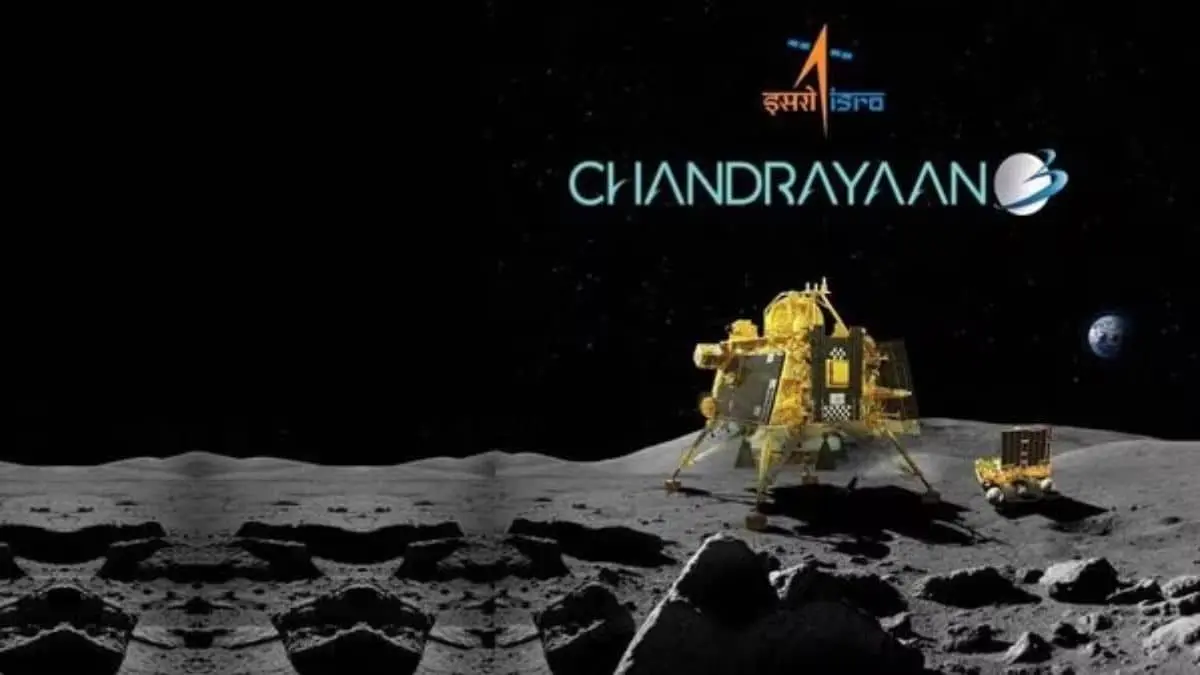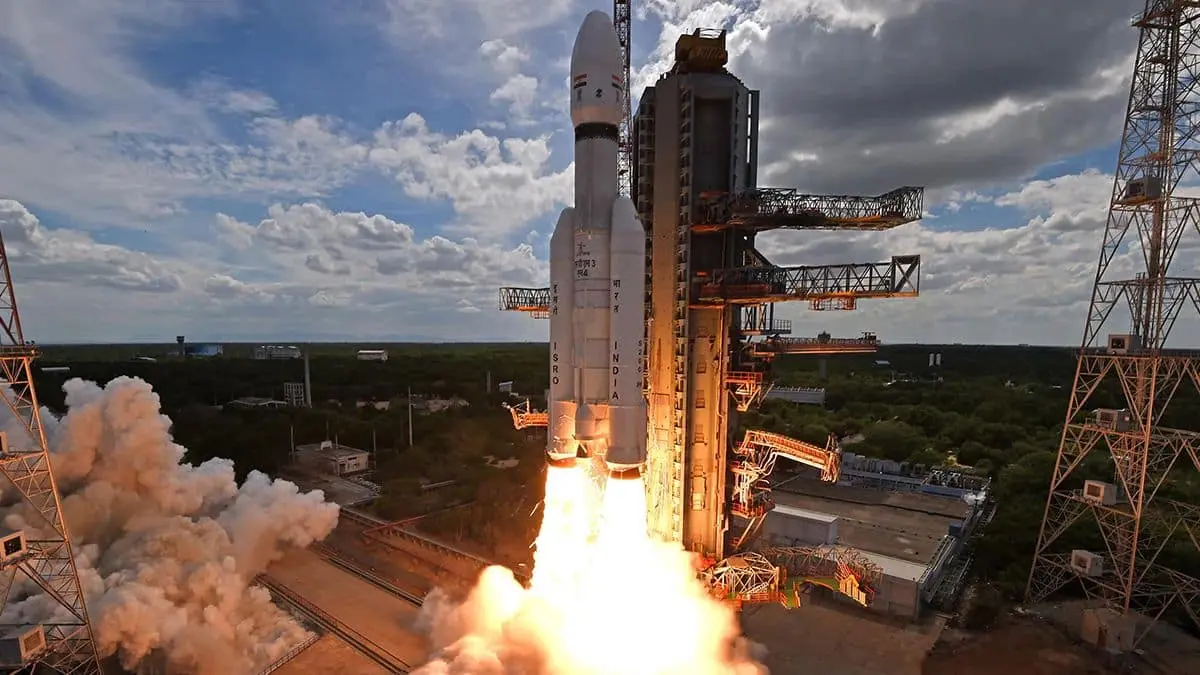The historic moment arrived on the 23rd of August, 2023, at 6:04 pm, when Chandrayaan 3 successfully landed on the lunar south pole. This monumental achievement not only filled India with pride but also holds the promise of numerous benefits for the nation. In this blog, we’ll explore how the triumphant landing of Chandrayaan 3 is poised to bring significant advantages to India, ranging from advancements in technology and space exploration to socio-economic growth.
Chandrayaan 3 and “National Pride”
Space missions have often been sources of immense national pride for countries around the world. When India successfully launched its first satellite, Aryabhata, in 1975, it marked a significant milestone in the nation’s technological prowess.
The launch of Chandrayaan-1 in 2008 was another monumental achievement, as it made India the fourth country to reach the moon. Mentioning such anecdotes not only adds an emotional connection but also showcases India’s dedication to scientific and technological advancement, instilling a sense of pride among its citizens.
Chandrayaan 3’s success contributes significantly to India’s global standing on several fronts:
- It highlights India’s capability to undertake complex space missions independently. The successful execution of missions like Chandrayaan 3 demonstrates India’s mastery of advanced technologies, positioning the country as a serious player in the global space exploration arena.
- Chandrayaan 3 fosters international recognition and collaboration. As India continues to advance its space program, it attracts partnerships and collaborations with other space-faring nations. These collaborations not only aid in knowledge exchange but also showcase India’s ability to engage in peaceful global cooperation.
- Success of Chandrayaan 3’s showcases India’s commitment to science and research. By investing in space exploration, India positions itself as a nation focused on the pursuit of knowledge and scientific discovery. This commitment can inspire young minds to pursue careers in STEM fields, leading to a more scientifically literate society.
- Chandrayaan 3’s accomplishments have the potential to improve diplomatic relations and foster goodwill among nations. Success in space missions often transcends political boundaries, creating opportunities for positive interactions and mutual respect among countries.

The Significance of Soft Landings
To comprehend the significance of Chandrayaan 3’s soft landing, one must understand the immense challenge it presents. Soft landings on celestial bodies, especially on the Moon, are often referred to as “15 minutes of terror.” This term encapsulates the precise timing and execution required to safely navigate a spacecraft to a gentle lunar touchdown.
Prior to India’s success, only three nations – Russia, China, and the United States – had achieved this remarkable feat. Chandrayaan 3’s successful landing signifies India’s mastery of this complex endeavor and opens the door to a world of possibilities.
A Global Perspective on Space Exploration
Before diving into the benefits, let’s set the scene on Earth’s satellite network. As of April 30, 2022, there were a staggering 5,465 operational artificial satellites orbiting our planet. Among the major spacefaring nations, the United States led the pack with a remarkable 3,433 satellites, showcasing its dominance in space. China, its closest rival, possessed 541 satellites, a significant but still lesser number.
Chandrayaan-3: India’s Lunar Ambition
Chandrayaan-3, the third lunar mission led by the Indian Space Research Organization (ISRO), takes center stage in India’s space exploration ambitions. This mission holds particular significance following the disappointment of Chandrayaan-2’s landing attempt. The primary objective of Chandrayaan-3 is to deploy a lander and rover on the lunar surface, where they will conduct operations for approximately one lunar day, equivalent to about 14 Earth days.
The rover, weighing just 26 kilograms, is nestled within the lander and is equipped with tools designed for lunar surface exploration. What sets Chandrayaan-3 apart is not only its potential for ground-breaking discoveries but also its remarkably low cost, at just ₹615 crore.

Did You Know?
Before its launch, the Chandrayaan-3 module underwent more than 3,000 wind tunnel tests at the Bengaluru site, according to the Council of Scientific & Industrial Research-National Aerospace Laboratories (CSIR-NAL). This rigorous testing underscores the dedication to ensuring the mission’s success.
Chandrayaan-3’s Threefold Objectives
The Indian Space Research Organization (ISRO) has outlined three key objectives for the Chandrayaan-3 mission:
- Soft and Safe Lunar Landing: Chandrayaan 3 aims to serve as a benchmark for soft and secure lunar landings. This achievement not only demonstrates India’s technical prowess but also paves the way for future lunar exploration missions.
- Moon’s Roaming Capabilities: The inclusion of a rover in this mission allows for mobility on the lunar surface. This capability is vital for exploring different regions of the Moon, enhancing our understanding of its geology and resources.
- In-Situ Scientific Research: Chandrayaan-3 is not merely a mission of touch-and-go. It is equipped to conduct in-situ scientific research, potentially uncovering secrets about the Moon’s composition, history, and resources.
A New Era of Technology
Chandrayaan-3’s mission components include a Rover, a Propulsion Module (PM), and an indigenous Lander Module (LM). These elements are not only instrumental in achieving the mission’s goals but also in developing and showcasing cutting-edge technology for future interplanetary expeditions. The mission marks a significant step forward for India’s space capabilities and its contribution to global space exploration.
- Rover: The rover, designed to explore the lunar surface, is equipped with advanced scientific instruments. Its mobility allows it to traverse the Moon, collect data, and make observations that were previously inaccessible.
- Propulsion Module: The Propulsion Module plays a crucial role in getting Chandrayaan-3 to the Moon and ensuring a precise landing. This module demonstrates India’s capability to navigate complex trajectories in space.
- Lander Module: The indigenous Lander Module is the vehicle that carries the rover to the lunar surface. Its successful soft landing is a testament to India’s engineering prowess.
Socio-Economic Impact on India
The success of Chandrayaan-3 extends far beyond the realms of space exploration. It holds the potential to usher in significant socio-economic benefits for India.
- Boosting National Pride and Inspiration: Successful lunar missions like Chandrayaan-3 inspire a sense of pride and patriotism among the Indian population. They serve as a testament to what India can achieve on the global stage. Furthermore, they motivate the younger generation to pursue careers in science, technology, engineering, and mathematics (STEM).
- Economic Growth and Job Creation: India’s growing involvement in space exploration creates opportunities for economic growth. The space industry, encompassing satellite technology, research, and development, can become a significant driver of economic activity. It not only offers high-tech job opportunities but also positions India as a hub for space-related innovation.
- Advancing Education and Research: Chandrayaan-3’s success will boost STEM education in India. It encourages students to take a keen interest in space science and technology, ultimately fostering a new generation of scientists and engineers. Additionally, the data and findings from lunar missions contribute to scientific research, expanding our understanding of the Moon and space.

Future Prospects and Collaborations
As we celebrate Chandrayaan-3’s success, we must also look to the future.
- Potential for Chandrayaan-4 and Beyond: Chandrayaan-3 sets the stage for further lunar exploration. India can build on this success and plan future missions to explore other facets of the Moon, such as its polar regions or its potential as a stepping stone for deep space exploration.
- Collaborative Ventures: India’s space agency, ISRO, can further strengthen its international collaborations. Collaborative missions with other space agencies open up opportunities for sharing knowledge, pooling resources, and achieving more ambitious goals in space exploration.
- Expanding India’s Space Portfolio: Beyond lunar exploration, India can diversify its space portfolio. This includes missions to other celestial bodies, satellite technology advancements, and contributions to addressing global challenges like climate change and disaster management.
Conclusion
Chandrayaan 3’s successful landing on the lunar south pole is a watershed moment for India’s space exploration journey. It opens the door to a future filled with technological advancements, scientific discoveries, and economic growth. As India continues to make strides in space exploration, it not only enhances its own capabilities but also contributes to the global understanding of our universe. Chandrayaan-3 is a symbol of India’s dedication to the pursuit of knowledge and innovation, and it holds the promise of a brighter future for the nation and its people.
Also Read: ISRO’s Recent Milestones: A Look into India’s Space Achievements



